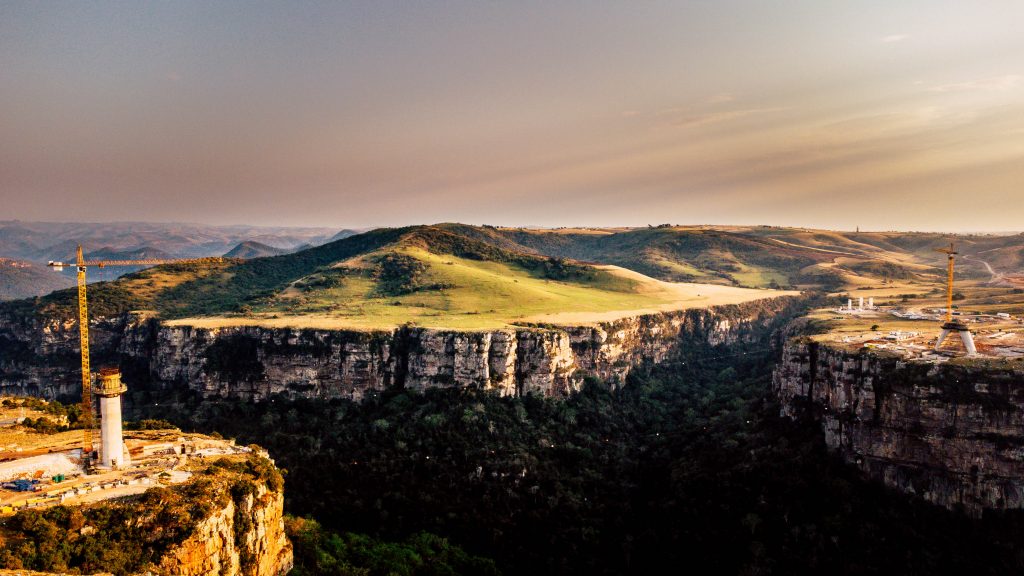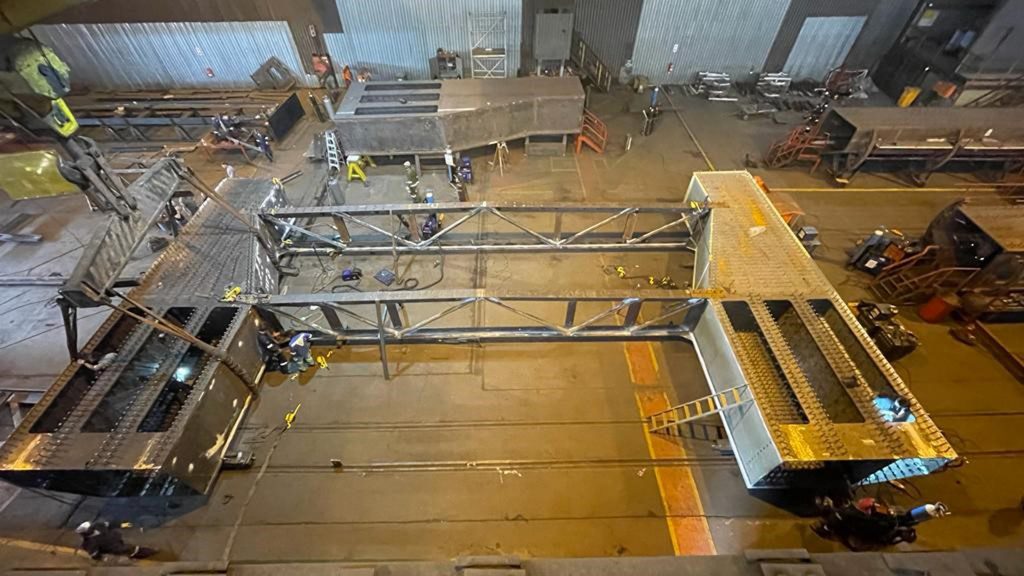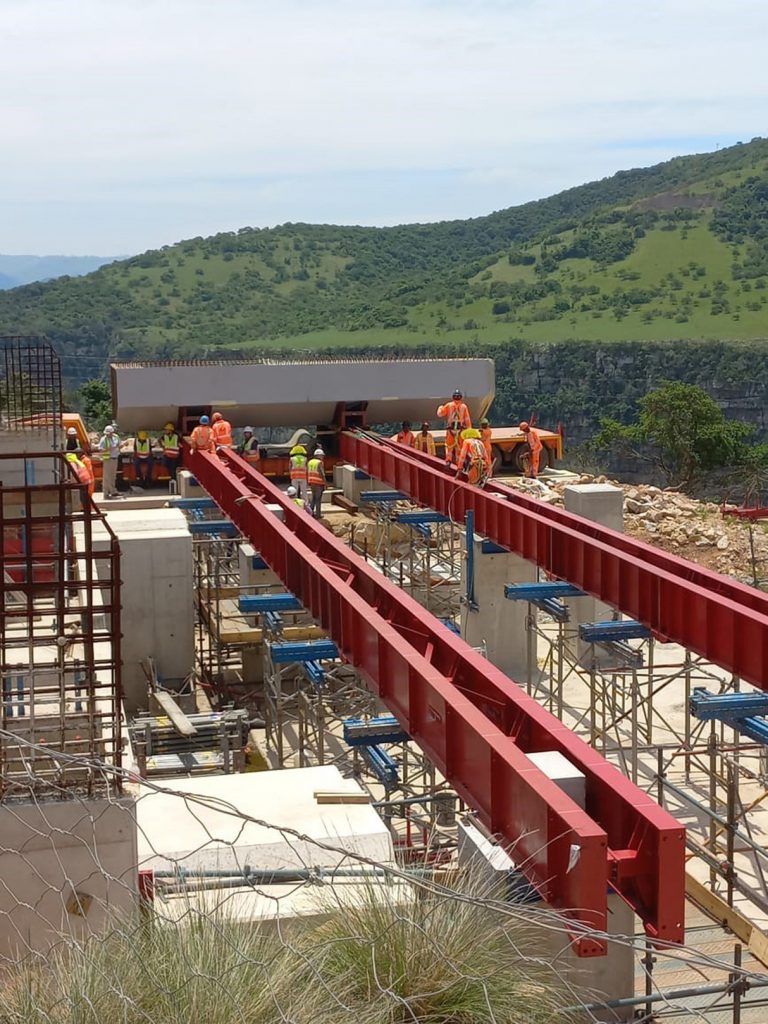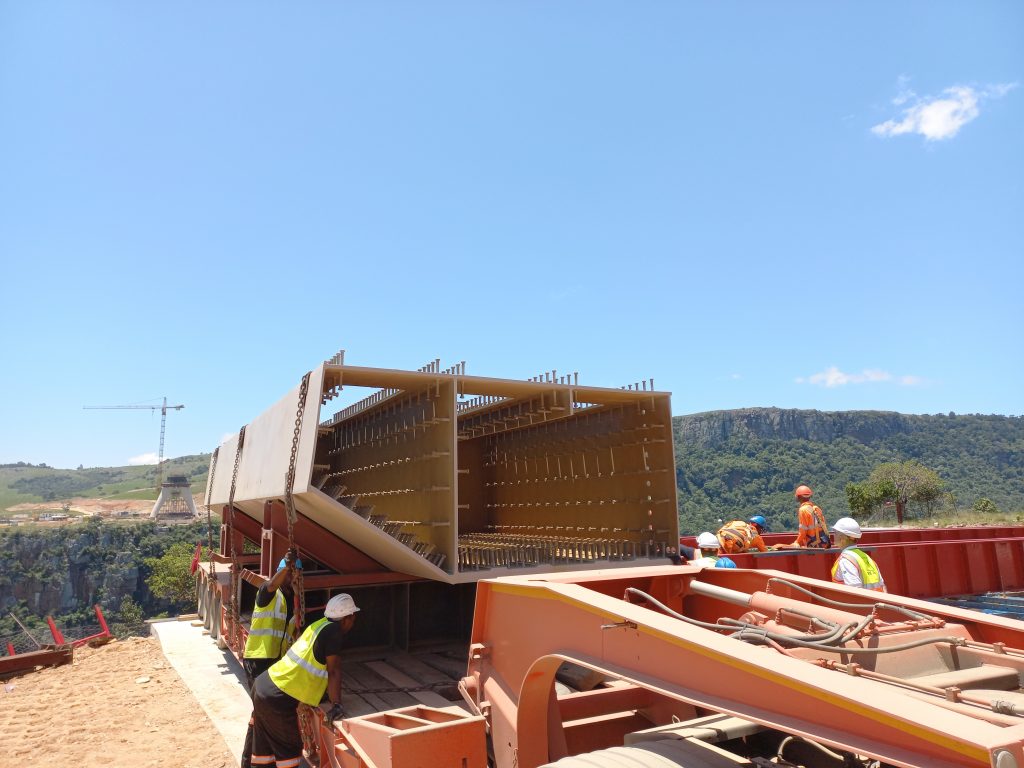The 580m Msikaba Bridge will cross the 195m deep Msikaba River gorge and once complete will be the longest-span cable-stayed suspension bridge in South Africa. It will also be the second longest in Africa after the 680m Maputo-Catembe Bridge in Mozambique. The anticipated completion date is the end of 2024.
The bridge, located approximately 23km east of Lusikisiki in the Eastern Cape, forms part of the backbone of the greenfields portion of the N2 Wild Coast Road (N2WCR) project.
Work has started on the Msikaba Bridge deck, the part of the bridge that will hang out over the gorge, that traffic will drive on to cross from one side to the other.
Msikaba Bridge deck segment being preassembled at a factory in Middelburg, Mpumalanga.
It took three trucks to transport the first steel bridge deck segment in three sections from Middelburg in Mpumalanga, where it is being cut and welded, and 3–5 hours to offload each segment at the bridge near Lusikisiki. All steel used to manufacture the material for the deck is 100% South African.
“This is quite a milestone. For a cable-stay bridge, a huge amount of work precedes the construction of the bridge deck itself. The pier includes major foundations to support the downward pressure from the cables, as well as the abutment and gallery next to the piers. This is where the deck starts and is joined to the base of the pier.
“The two massive anchor blocks on each side, each half a soccer field long and buried four storeys into the ground, must be substantially complete before work on the deck extending out over the gorge can start,” explained SANRAL’s N2WCR Project Manager Craig McLachlan.
The first box girder section of segment zero South Bank being off-loaded and slid into place.
The entire deck comprises 36 segments in all, 18 on each side. Each segment is made up of two box girders and two truss girders. With three trucks needed to transport each segment, it will take 108 truck delivery trips in all, including four abnormal loads for the four boxes for segment zero at the North and South sites.
Segment zero on each side is not connected to any cables, but is attached to the abutment and supported from below until it is connected upward to segment 1. Segments 1 to 17 each have two cables attached on each side (one on either side). Each box segment will be supported or held up via these two cables leading up to the 127m high pier, with two corresponding cables connected back down to the anchor blocks.
Assembly of the segments is not an easy task. “With the exception of segment zero, which can be assembled in situ, each segment will be assembled on the bank, then carried between the legs, launched out above the gorge, rotated 90 degrees, brought back and attached to the preceding segment, or in the case of the first segment, to the embankment,” said McLachlan.
“The segment then has two cables attached, one on each side. The cable is attached to the spire and another corresponding set is attached to the anchor block. A thin steel and concrete composite deck is then cast. The process is repeated until the decks meet in the middle.”
To simplify the complicated forces at play: through the cables, the mass of the deck (and the cables themselves) will pull forwards and downwards on the top of the pier, and the deck itself will push backwards into the base of the pier. The cables attached in turn from the pier to the anchor blocks will pull backwards and downwards on the piers to partially counteract these forces. Therefore, logically the piers and the pier foundations must be strong enough to support both the downwards and horizontal components of these forces.
Off-loading the second box girder for the South Bank segment zero.
When joined together, the two large boxes on each side of the deck segments will form two separate 290m long box girders that provide the longitudinal support and stiffness for each half the bridge. This means there will be a joint at the midpoint of the bridge, so each half of the 580m long bridge is an independent structure.
The smaller truss girders linking the boxes are stiff compound steel structures that provide the main cross-support between the longitudinal box girders and provide twisting stiffness or rigidity. Together they form a very large ladder-shaped steel structure, upon which the (combination steel and reinforced concrete) deck plate lies, and on which the four-lane highway will run.
Once completed the Msikaba Bridge will play a crucial role in improving travel time, connecting previously divided communities in the region, and opening opportunities in business and community-based tourism for the Wild Coast.





